Ready to explore one of the deepest canyons on Earth? Colca Canyon in southern Peru offers a mix of epic landscapes, remote trails, awesome costumes of its ancient inhabitants, and soaring condors that make it a must for adventure travelers.
Whether you're planning a multi-day trek or a short scenic visit, this complete guide has everything you need—from how to get there and when to go to what to pack and where to stay. Let's dive into the heart of the Andes and discover what makes Colca Canyon an unforgettable destination.
Colca Canyon, the fourth deepest canyon in the world
Nestled in the south of the Peruvian Andes, the Colca River has been carving its course for millennia, gradually turning beautiful high Andean landscapes into an immense canyon, whose depth and extension still amaze the world. For 7,000 years, its entrails have been home to diverse human groups that have been adapting to the environment and developing their own peoples, cultures, and traditions.
Today, being able to visit Colca Canyon communities and marvel at their customs and lifestyle is something unique in your visit to Peru. Of course, not to mention the condors, inhabitants of the valley even older than humans, roaming the heights, as born watchers of the amazing Colca.
Where is the Canyon del Colca?
The Colca Canyon is situated in the Arequipa department, south of Peru. Precisely, at 162 kilometers north of the city. The province of Caylloma hosts it and borders the department of Cusco to the north, the provinces of Camaná and Arequipa to the south, the department of Puno to the east, the province of Castilla to the west, and the province of Condesuyos to the northwest.
Colca Canyon altitude
The Colca Canyon goes from 970 to 6,300 meters above sea level. In addition, the extension of the Colca Canyon is around 100 kilometers in a north-south direction. The highest parts of the canyon descend abruptly to the very base of the depression, where the river is located.
How deep is Colca Canyon?
It has 11,154 feet of depth, making it the fourth-deepest canyon in the world. This canyon is just behind its twin, the Arequipa canyon of Cotahuasi (11,297 feet deep), the Nepal canyon of Kali Gandaki Gorge (18,000 feet deep), and the Chinese canyon of Yarlung Tsangpo (18,000 feet deep)
Important data
Do you know that besides Colca Valley, other fantastic Peru valleys exist to explore? We invite you to discover the Sacred Valley of the Incas!
Colca Canyon history: A brief resume
Long before Colca Canyon became a destination for hikers and travelers, its steep slopes and fertile valley were home to some of the earliest Andean civilizations. Archaeological evidence suggests that human presence in the Colca Valley dates back over 7,000 years, when nomadic hunter-gatherers began settling near the riverbanks, drawn by the region’s water sources and abundant wildlife.
The First Settlers of the Colca Valley
Later, more established communities began to emerge. These early settlers created agricultural terraces, many of which are still visible today, and started cultivating crops like maize, potatoes, and quinoa. The valley’s towns gradually evolved into complex societies, including the Collaguas and Cabanas, who thrived centuries before the Inca expansion.
These groups not only shaped the landscape with their terraces and irrigation canals but also left behind traces of their cultural identity through ceramics, tombs, and sacred sites scattered throughout the valley. Their traditions and customs later influenced the Inca administration and are still present in many aspects of local life today.
The Colca Valley isn’t just a natural wonder, it’s also a living historical record of resilience, adaptation, and community in one of the Andes’ most breathtaking settings.
Villages to visit in the Colca Canyon
The natural wealth of the Colca Canyon is reflected in its nearby towns, where the ancestral traditions of the first inhabitants of the canyon are still preserved. These are some of the most interesting places to visit:
Chivay
Entrance point to the canyon and the best-known town in the area. Here, you will find tourist services, local markets, and thermal baths like those of La Calera. It is a good place to acclimatize and start your route.
Yanque
A few kilometers from Chivay, Yanque has one of the most beautiful colonial churches in the valley: the church of the Immaculate Conception. In the mornings, in the main square, you can see traditional dances such as the Wititi.
Cabanaconde
Ideal for adventure seekers, from this town you can access the best hiking trails, such as those that go down to the Sangalle oasis. It is also one of the best places to observe the flight of the condor.
Coporaque
One of the oldest towns in the valley. It is quiet and perfect for getting to know the local lifestyle, with panoramic views and pre-Inca ruins nearby.
Maca
Famous for its baroque church and craft stalls. Although it is a short stop, it is worth stopping to visit its square and try a chicha or cactus ice cream.
Best activities to do in the Colca Canyon
For its unique geography, the Colca Canyon is a spectacular destination for travelers seeking nature, adventure, and cultural encounters in Peru, besides its Machu Picchu experience, of course. Whether you're looking for an adrenaline-filled experience or a peaceful retreat surrounded by Andean landscapes, the Colca Canyon offers a wide variety of things to do. Here are the top activities you shouldn’t miss.
Go on a Colca Canyon Tour
One of the easiest ways to explore the region is by joining a tour. These tours typically start from Arequipa and can last one to three days, with transport added. They also include scenic drives through the Andes, stops at traditional villages like Chivay and Yanque to see the lifestyle and costumes of their inhabitants, and a visit to the famous Cruz del Cóndor, one of the best places in South America to see Andean condors in flight.
A Colca Canyon tour also includes cultural experiences, such as learning about local harvest using pre-Inca agricultural terraces, relaxing in thermal baths, and trying local delicacies like alpaca or quinoa soup.
Embark on a Colca Canyon Trek
For adventurous travelers, the Colca Canyon trek is a must-do. Trekking routes vary in difficulty, but most take you deep into the canyon, offering stunning views and the opportunity to spend the night in small local lodges or eco-lodges.
The two-day and three-day treks usually begin with a descent into the canyon, an overnight stay in the oasis of Sangalle, and a challenging uphill return. Along the way, you'll pass local villages, see their terraced fields, and have a chance to meet their inhabitants.
Spot the Majestic Andean Condor
Watching condors soar above the canyon walls is one of the highlights of any visit to the Colca. Thus, the best viewing point to appreciate them is Cruz del Condor, located about an hour from Chivay. Getting there early in the morning is the best time to catch these enormous birds riding the higher air currents of Colca Canyon.
Visit Traditional Villages
The Colca Valley is dotted with charming towns that preserve ancient customs and architecture. Places like Yanque, Coporaque, and Cabanaconde are great for experiencing local festivals, visiting colonial-era churches, and learning about the Collagua and Cabana cultures.
Relax in the Hot Springs
After a long day of trekking or touring, soaking in the La Calera Hot Springs near Chivay is the perfect way to unwind and recover energies!. These natural thermal baths offer scenic surrounding mountain views and a chance to relax your muscles in warm, mineral-rich waters.
Try Local Cuisine
Exploring the Colca Canyon also means indulging in authentic Andean food. Restaurants and local markets serve dishes made from local ingredients such as potatoes, corn, and alpaca meat. Don’t miss Chairo soup, Rocoto Relleno, or Quinotto (quinoa risotto).
Discover Pre-Inca Ruins and Terraces
The area around the Colca Canyon is rich in ancient history. You’ll find impressive Inca agricultural terraces carved into the mountains and lesser-known archaeological sites that date back to pre-Inca times. Some guided Colca Canyon tours include stops at these ruins, adding a historical touch to your nature and adventure journey.
Important note:
If you want to discover other fantastic treks in Peru, you can take a look at our Classic Salkantay Trek 4 days!
How to get to the Canyon del Colca
Being one of the most visited attractions in the country, the transportation and communication routes that connect it are many and from different places; the most popular starting points being the cities of Arequipa, Cusco, and Lima. Of course, everything is simplified if you hire private transportation or a Peru tour package that includes all your transportation to the Colca Canyon; you would not have to worry about anything!
Going from Arequipa to Colca Canyon
Arequipa is the department where the Colca Canyon is. So, from its bus terminal, you can take public transportation heading to Chivay town, the capital of Caylloma province, the most touristic area of the region. The bus trip lasts 03 hours. From this point, the majority of Colca Canyon treks and tours began because Chivay hosts many tourist accommodations, lodgings, and restaurants.
Going from Lima to Colca Canyon
The capital of Peru, Lima, is the main (and, in some cases, the only one) entrance door to Peru. From there, you can take a direct flight to Arequipa. Happily, there are daily flights that connect both cities round trip. The flight lasts an hour and a half.
From the White City (Arequipa) bus terminal, you can take transportation heading to Chivay town and begin your Colca Canyon tour.
Going from Cusco to Colca Canyon
Machu Picchu is undoubtedly Peru's main attraction. And many of its visitors, who number in the thousands, want to visit other important attractions such as the Colca Canyon. From Cusco, you can take a direct flight to Arequipa, which takes approximately one hour. Upon arrival, you can continue to the Colca Canyon by bus or private transfer.
Alternatively, you can take a bus from Cusco, which takes between 10 and 12 hours, depending on the route and the stops made. Once in Arequipa, you can follow the same options indicated in the "From Arequipa to the Colca Canyon" route.
Going from Puno to Colca Canyon
After visiting the magical Lake Titicaca and its Uros or Sillustani islands, you can take a short hop to the Colca Valley. Although there are no direct flights from Puno to the Canyon, you can first travel from Puno to Juliaca city by public transport or taxi; the journey takes about an hour. Juliaca has the closest airport to Puno, so weekly flights depart from there to Arequipa. The plane ride takes between 30 and 40 minutes. Once in Arequipa, you can take a bus or hire private transportation to reach the Colca Canyon, which takes between 3 and 4 hours.
Another alternative is to take a direct bus from Puno to the Canyon, with an estimated travel time of 5 to 6 hours.
Colca Canyon Weather
The Colca Canyon, being in the Peruvian Andes mountain range, in its southern sector, has a typical cool high altitude climate, with marked differences in temperature between day and night, as well as well-defined seasons. In the Andes, seasons such as summer, autumn, spring, and winter are summarized in only two seasons, the rainy season and the dry season.
Knowing when to travel is key to enjoying the experience to the fullest.
Rainy Season (November to April)
Between November and April, especially from December to March, rains are more frequent and intense. This can turn trails into slippery roads and make it difficult to access certain areas, and rainfall can even close roads.
Daytime temperatures range from 59°F to 81°F, and at night, they drop between 50°F and 59°F. Still, those seeking a quieter, uncrowded environment and lusher vegetation can visit the canyon at this time of year. In addition, prices for entrance fees, hotels, restaurants, and tours tend to be cheaper.
Dry Season (May to October)
During these months, the weather is more favorable, with clear skies and pleasant temperatures for outdoor activities such as hiking and condor watching. Daytime temperatures are usually between 50°F and 70°F, while nighttime temperatures can drop to 32°F.
For all these reasons, the dry season is the most popular time to visit the canyon, so there is a greater influx of visitors and higher prices for lodging and transportation. Despite this, the good weather conditions and accessible trails make it well worth the visit.
So, what is the best time to visit Colca Canyon?
The Colca Canyon is more than a scenic destination, it's a place where natural beauty, wildlife, and culture meet. And, to enjoy it with clear skies, radiant sunshine, and solid roads, the dry season is the best time to visit the Colca Canyon. Of course, you'll have to share the route and season with thousands of other visitors at slightly higher prices, but it will be totally worth it.
What to pack for the Colca Canyon?
As you can see, the Colca Canyon weather presents two well-defined seasons with their own characteristics. All will depend on what time you want to visit the Canyon to pack as the better form your luggage. We can suggest the following recommendations:
Outfit
- Sandals: Useful if you plan to visit hot springs or just to rest in your lodging after a day of trekking.
- Trekking boots: These are Indispensable for hiking the canyon trails. They should offer good support, have wide soles, and be comfortable for long hikes.
- Waterproof and windproof jacket: Highly recommended if you travel during the rainy season. This type of jacket protects you from wind and humidity.
- Comfortable pants: Convertible trekking pants (that can be transformed into shorts) are an excellent option to adjust to changing weather.
- Sweater or thermal garment: A sweater or fleece jacket will keep you warm at night when the temperature drops significantly.
- Short and long sleeve polo shirts: Lightweight, quick-drying fabric is best for comfort while hiking.
- Layered clothing: Since temperatures vary greatly, it is ideal to dress in layers. This way you can adapt to the heat of the day and the cold of the night with ease.
- Scarf and gloves: Recommended if you are traveling between April and August, or if you are sensitive to nighttime cold.
- Hat or cap: Helps protect you from the sun, especially during midday hikes.
- Sunglasses: Make sure they have UV protection to protect your eyesight.
- Swimwear: Don't forget your bathing suit if you want to enjoy the hot springs in the area.
Equipment
In addition to appropriate clothing, there are certain items that will make your trip easier and help you enjoy it more safely and comfortably. Here's a recommended list:
- Sunscreen: Bring a high-factor sunscreen, as solar radiation at high altitudes like Colca can be intense.
- Hydration: A reusable bottle is key to staying hydrated during your hikes.
- Insect repellent: This will help you avoid mosquito bites, especially in vegetated areas or near water.
- Basic first-aid kit: Include personal medications, pain relievers, altitude sickness pills, and antihistamines.
- Light source: A flashlight or headlamp will be very useful if you hike at dusk or if you're staying in a poorly lit area.
- Camera or cell phone with a good camera: You won't want to miss the opportunity to photograph the canyon's landscapes.
- Portable charger: To ensure your cell phone or camera doesn't run out of battery along the way.
- Durable backpack: This is Necessary to carry all your personal items comfortably during excursions.
Where to Stay in the Colca Canyon
As with any excursion lasting more than three days, especially in the rugged terrain of the Colca Canyon's rims and slopes, having a good place to rest and spend the night is essential. That's why we present four lodging options in the Colca Canyon with first-class facilities.
Colca Lodge Spa & Hot Springs
Located in Coporaque, this lodge offers a unique experience combining comfort and nature. It features outdoor thermal pools, a spa that uses geothermal energy, and stunning views of the valley. Guests praise the attentive staff and the quality of the facilities.
Belmond Las Casitas
Located in Yanque, this luxury hotel offers private villas with fireplaces and a heated pool. Visitors praise the privacy, natural surroundings, and personalized service provided in every detail.
Casa Andina Standard Colca
Located in Chivay, this hotel combines comfort and tradition in a cozy atmosphere. It offers rustic rooms, common areas with a fireplace, and an observatory to enjoy the night sky. The hospitality of the staff and the proximity to local attractions are its main strengths.
Aranwa Pueblito Encantado del Colca
This charming hotel, located in Yanque, recreates a small Andean village with all modern amenities. It offers a spa, pool, and outdoor activities. The beauty of the location and the quality of the service are its highlights.
How to avoid altitude sickness in the Canyon de Colca
The Colca Canyon is located at an altitude of over 3,000 meters above sea level. If you come from lower altitudes, your body may experience symptoms of altitude sickness, which may include dizziness, fatigue, fever, vomiting, and even diarrhea.
To prevent this, the following recommendations are made:
- Spend a few days at altitude without overexerting yourself physically. Allow your body to acclimatize in the city of Arequipa (2,335 meters above sea level) or Chivay (3,635 meters above sea level).
- Eat light and healthy food before and during the hike. Easily digestible foods are recommended. Avoid fish and red meat.
- Drink regularly and avoid alcohol, especially in the days before and during the hike.
- If you wish, you can bring specific medication for altitude sickness after consulting your primary care physician.
How and where to buy tickets to the Colca Canyon
Unfortunately, the Colca Canyon Circuit Tourist Ticket is not sold online or through digital means but at two physical offices located in Arequipa and the town of Chivay:
- Tourist Information Office, Municipal Portal No. 112 (Monday to Friday, 8:00 am to 3:45 pm).
- Interpretation Center/ticket control in Chivay, Entrance to Chivay s/n (Monday to Sunday, 5:00 am to 6:00 pm).
The ticket, in addition to including the right to visit the Colca Canyon, includes admission to the Salinas and Aguada Blanca National Reserve, located very close to the Canyon, with unbeatable views of the local fauna, such as Andean camelids, flamingos, and others. It also includes a visit to the Valley of the Volcanoes.
Prices
| Peruvians | Latin Americans | Foreign People | |
| Adult | $ 6.00 | $ 11.00 | $ 19.00 |
| Children (6-15 years old) | $ 2.00 | $ 6.00 | $ 6.00 |
| Student (Undergraduate) | $ 2.00 | X | X |
| Older people (+60 years old) | $ 2.00 | X | X |
The Prices are in American dollars and may change at any time, according to the decision of Autcolca, the Autonomous Authority of Colca and Annexes.
“Visiting the Colca Canyon is much more than a trip to a stunning destination: it's an opportunity to connect with nature, discover ancient customs, and challenge your own limits. Whether you're looking for majestic landscapes, cultural experiences, or simply a moment of peace, this corner of Peru has something for you. Dare to experience the adventure, hike its trails, gaze up at the sky, and watch the condor soar in freedom. The Colca Canyon awaits you with open arms and endless stories to tell.”

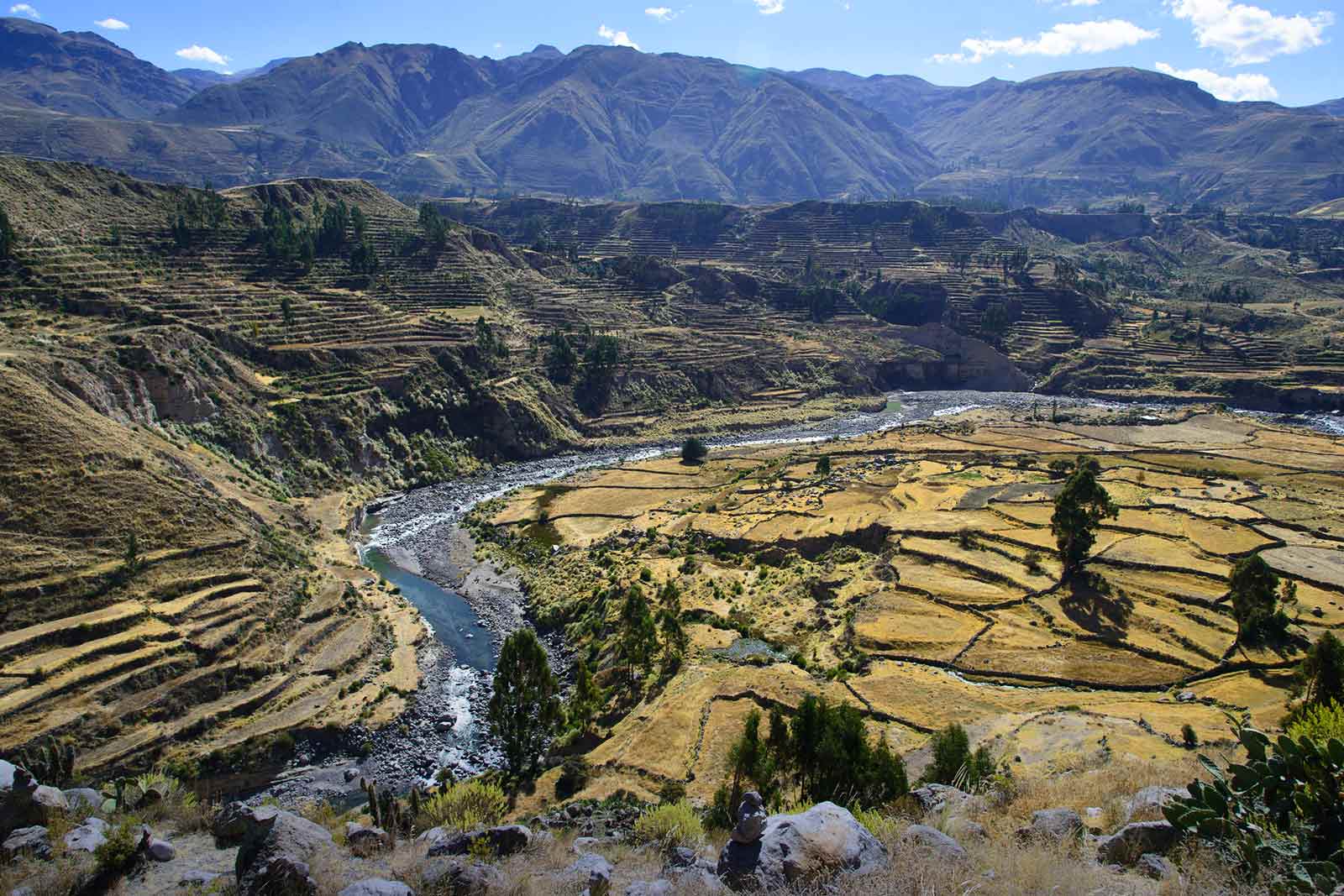
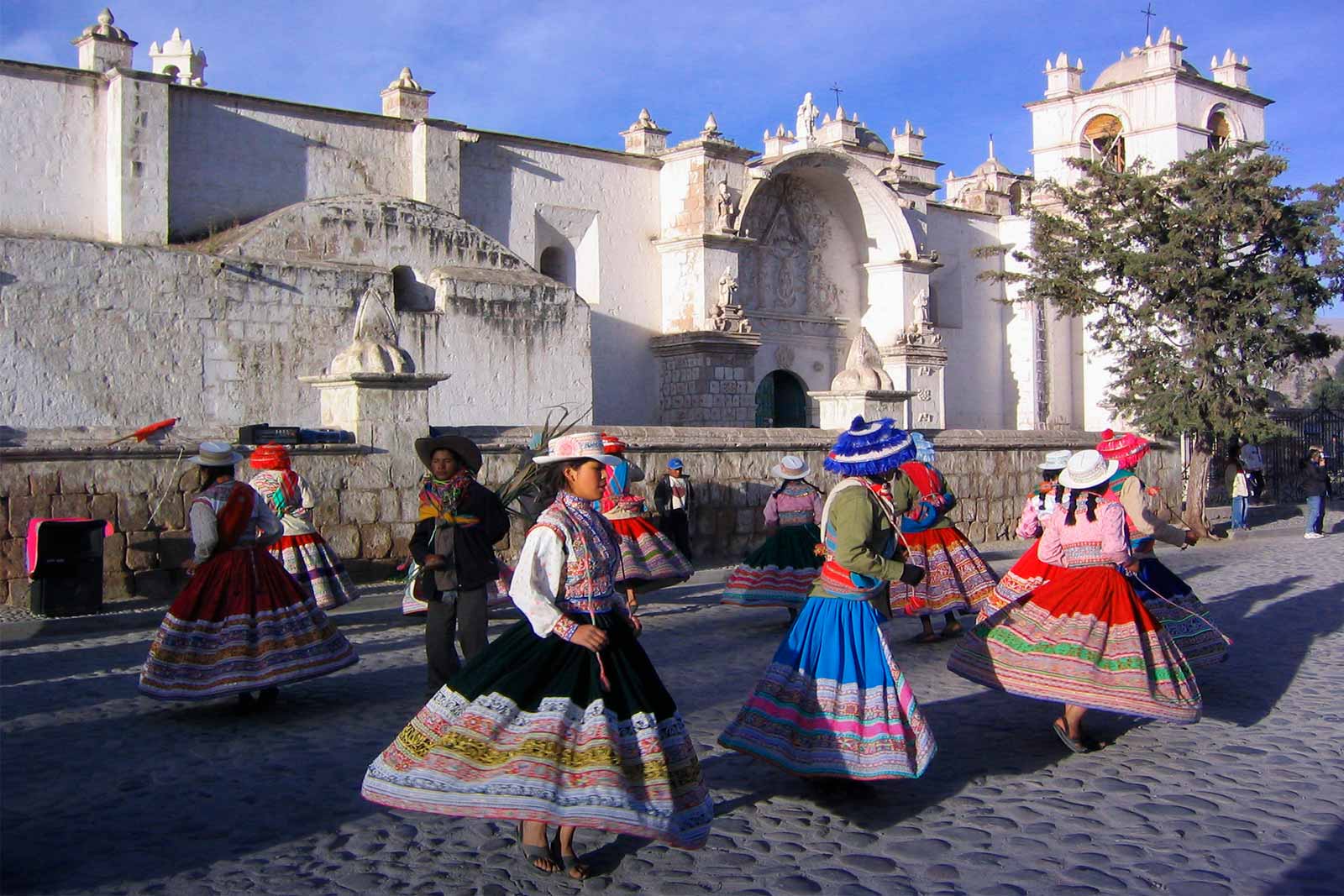
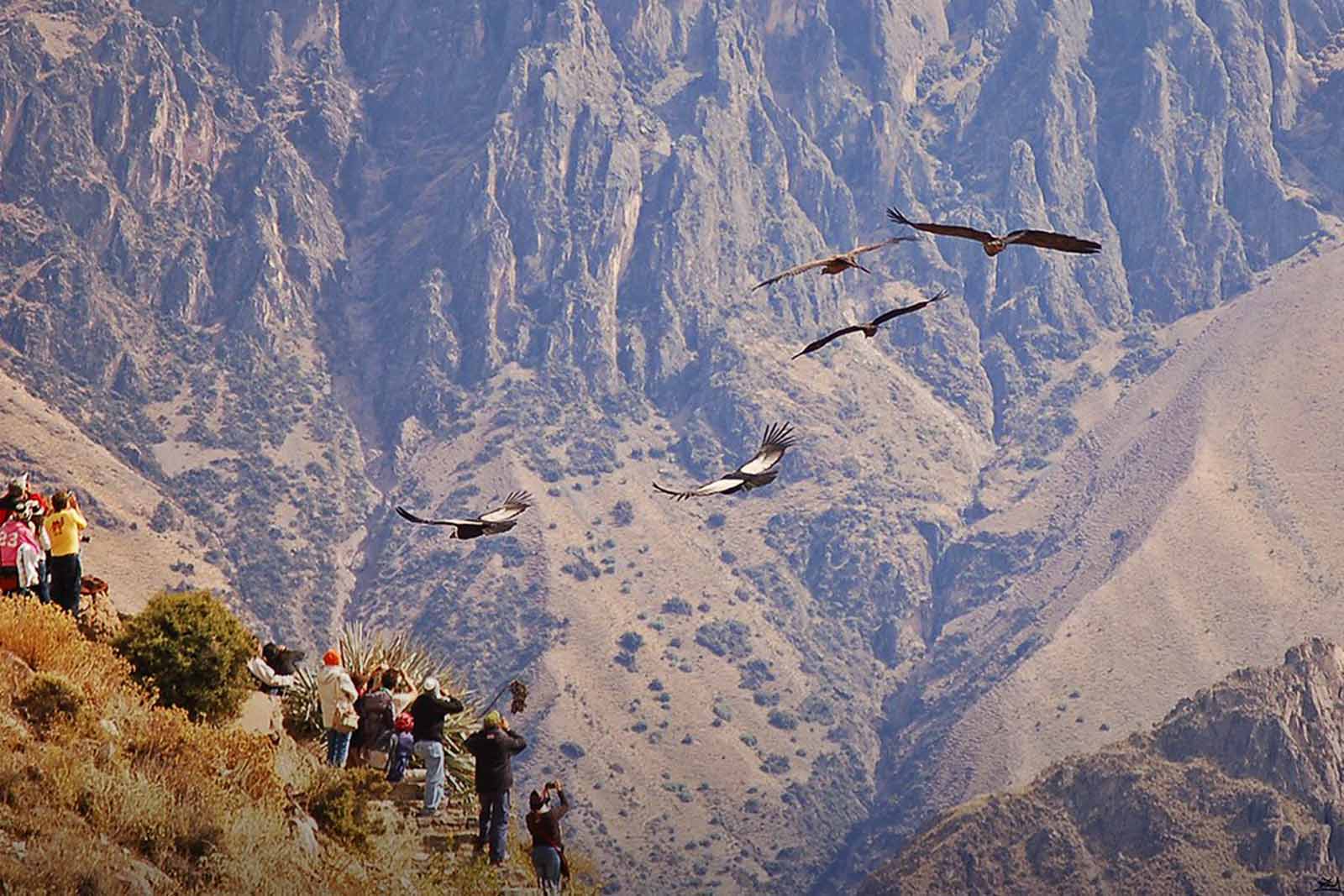
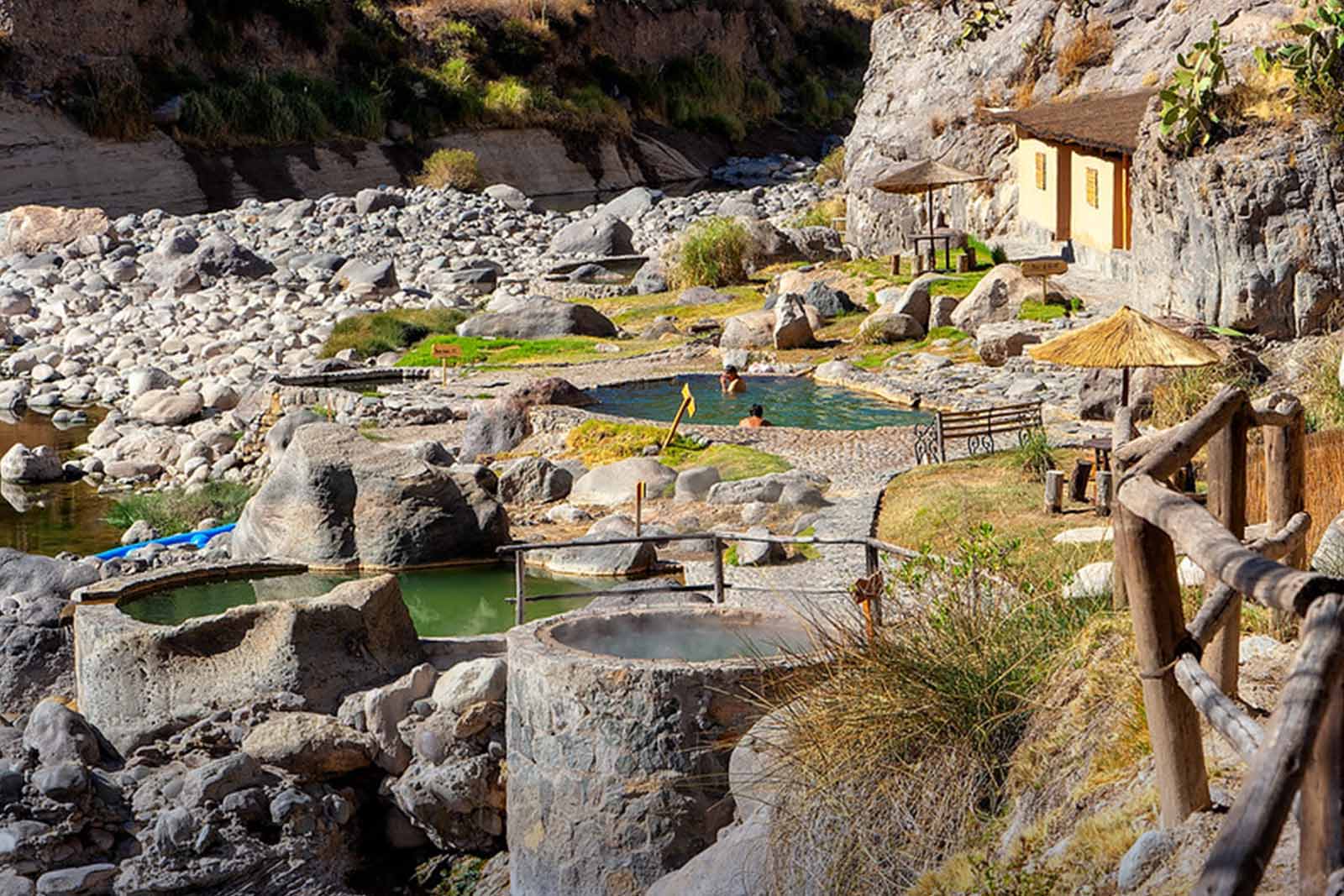

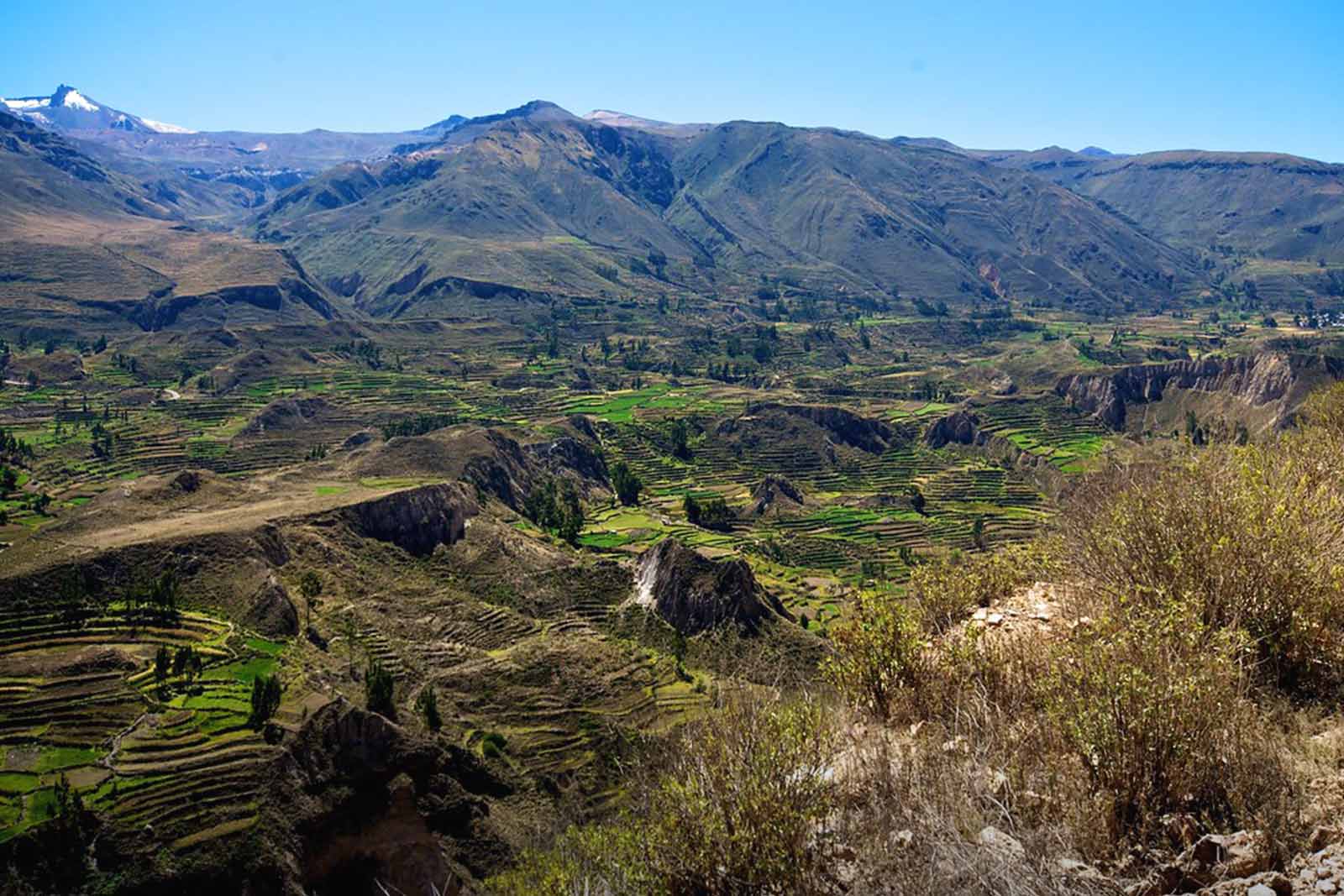
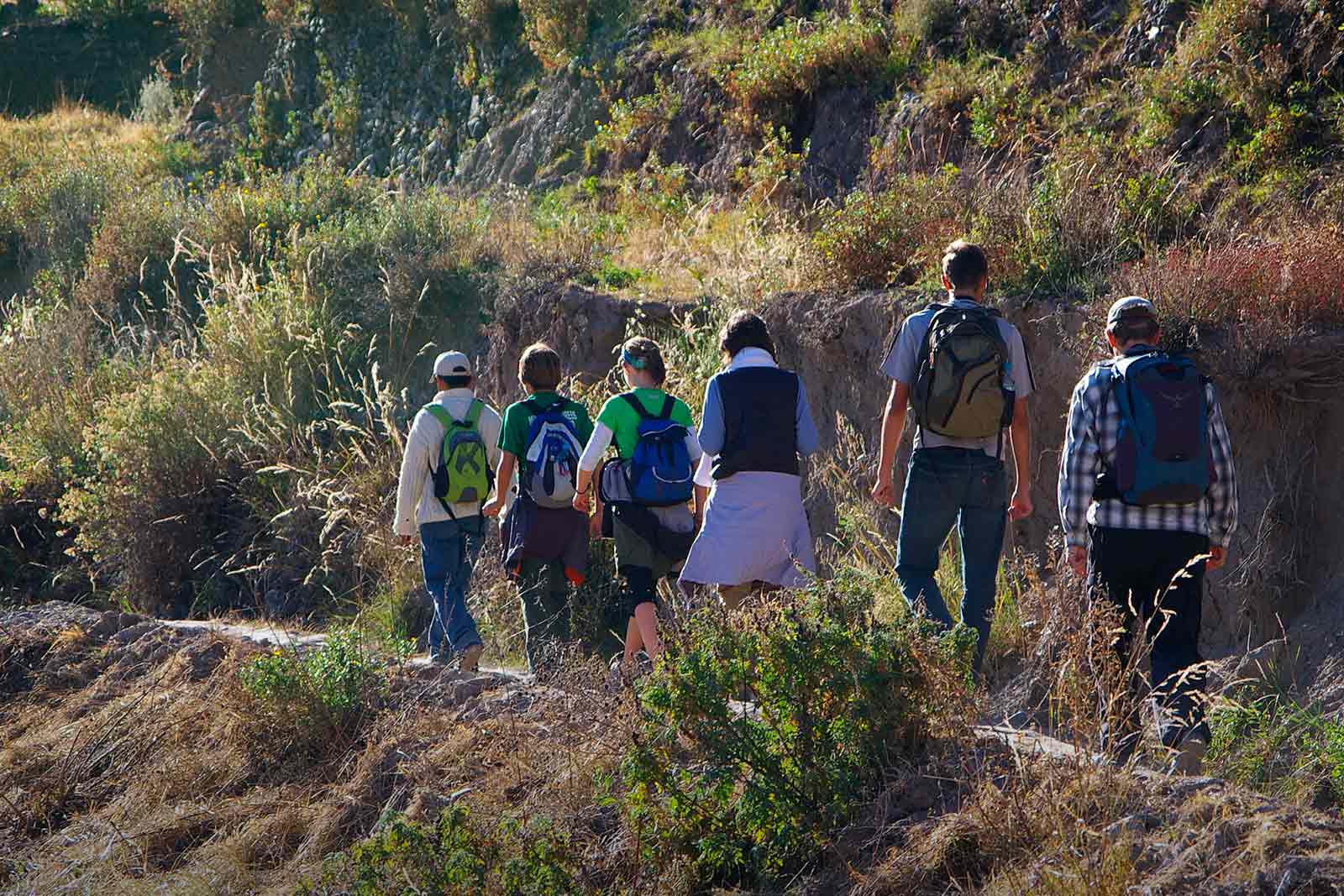
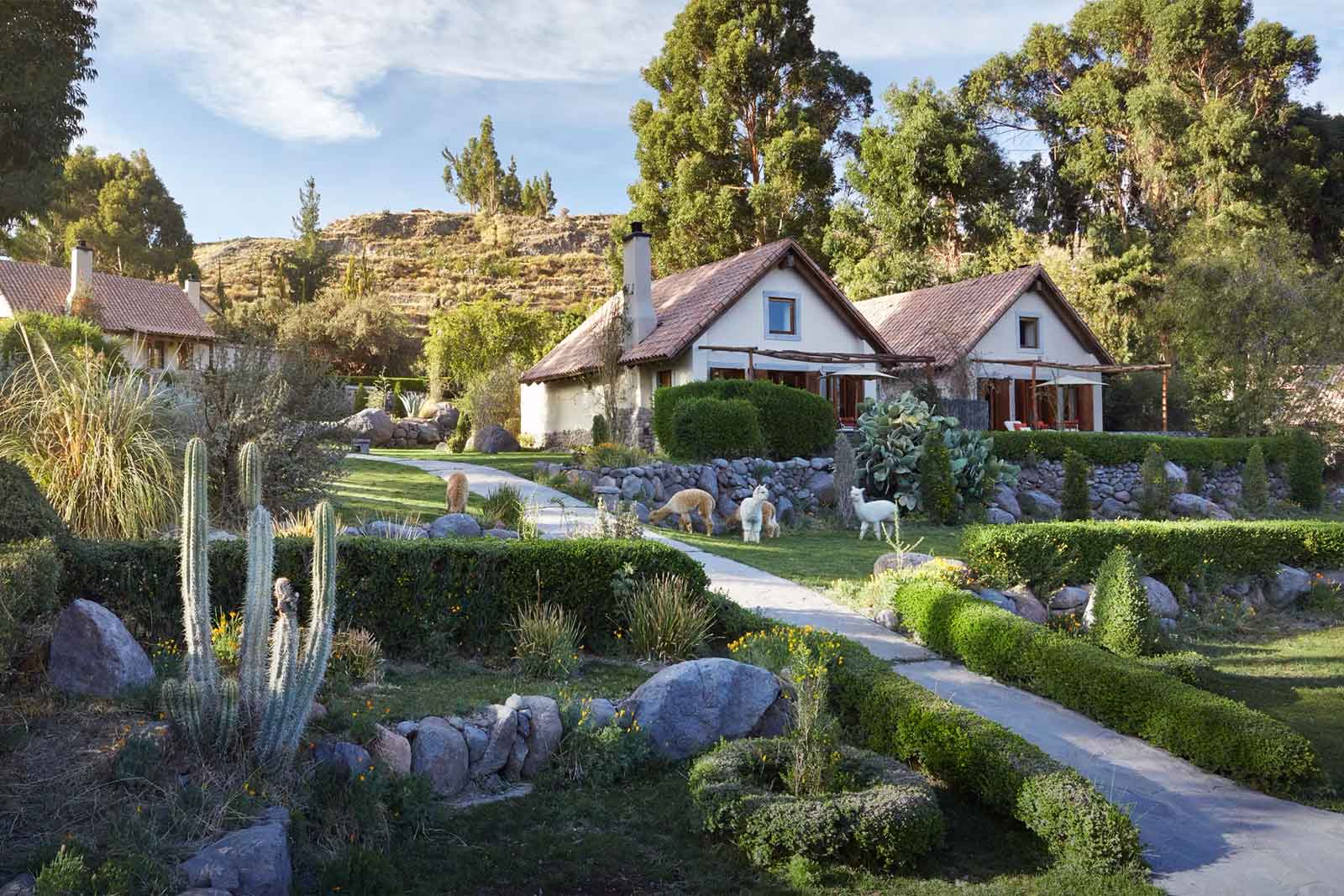
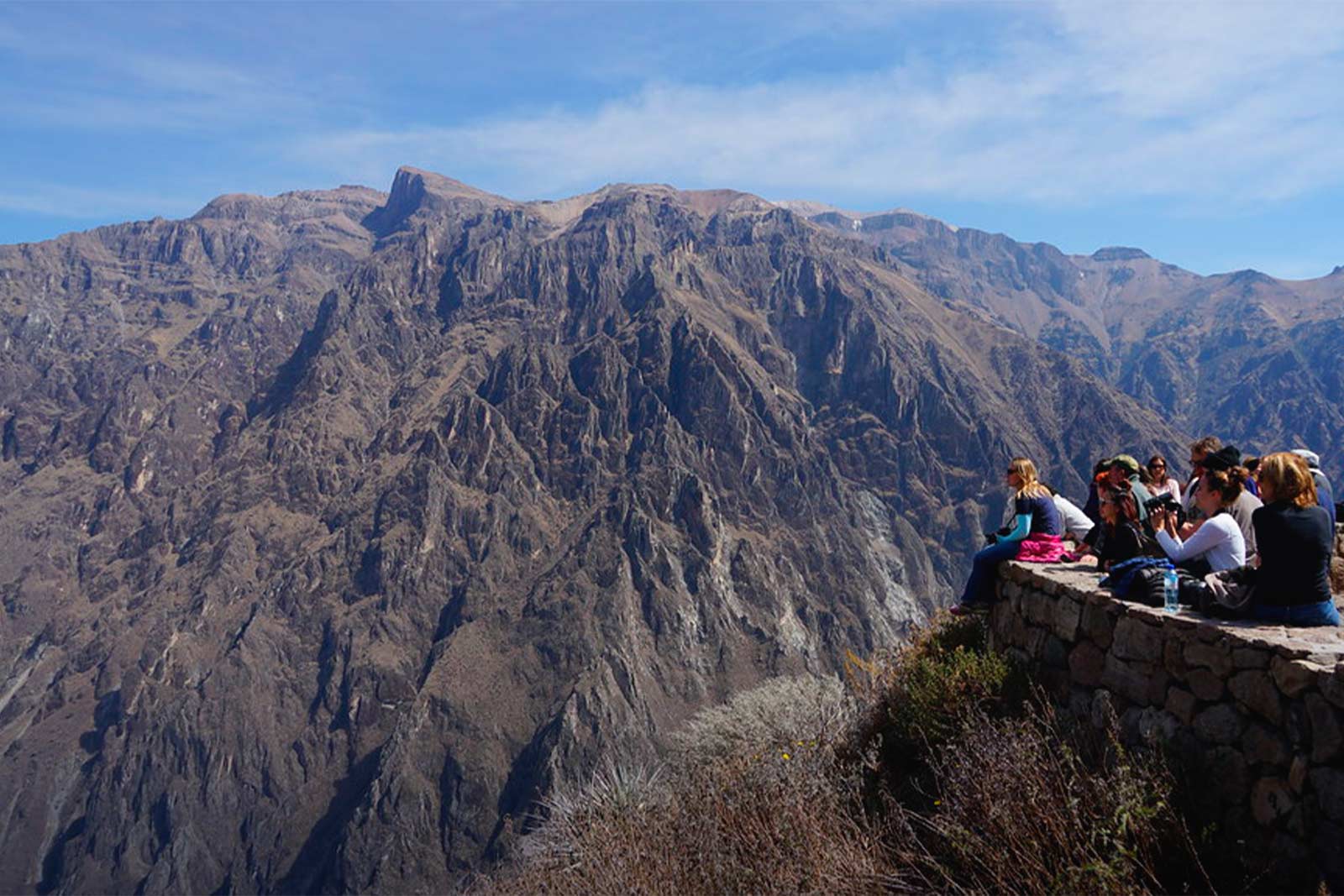
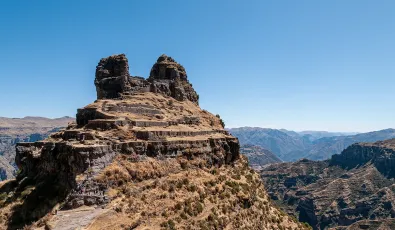

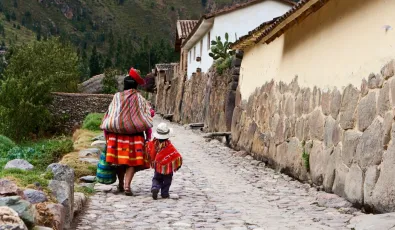
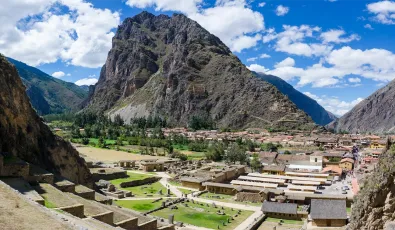
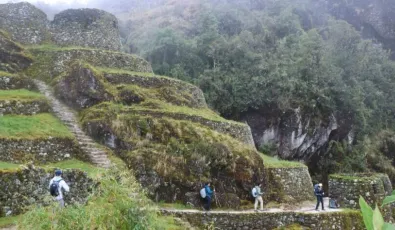
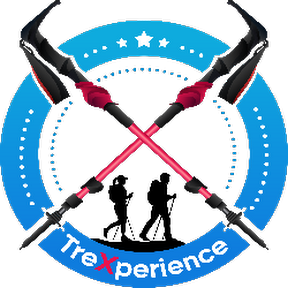
Add new comment